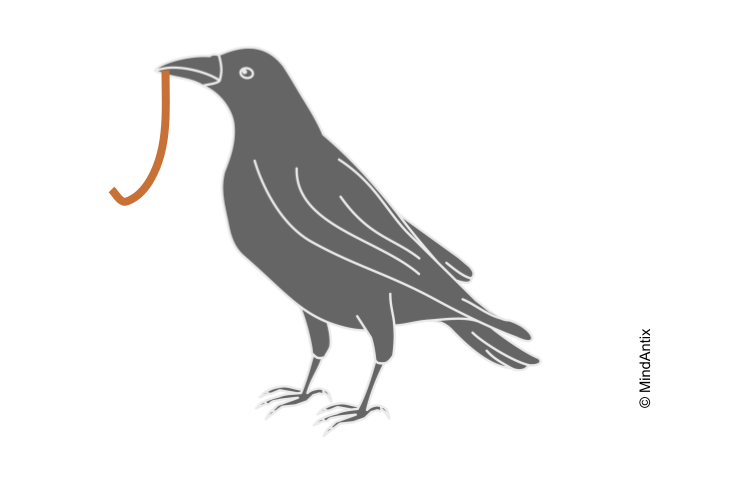Creativity has become one of the most desired skills to possess in the 21st century. Creativity is envisioned to be the answer to rapid automation that is taking away routine jobs and the essential ingredient for solving complex global problems we currently face. Creativity, being a uniquely human trait, has allowed us to adapt and thrive as a species so far and can potentially do so in the future as well.
But is creativity really unique to humans or do other species show any evidence of creativity?
Understanding how creativity evolved in other animals can help us better understand our own creative abilities. Recent research suggests that creativity is a spectrum with other animal species showing rudimentary forms of creativity.
Animal Creativity Spectrum
According to one model, creativity is a spectrum that starts with novelty recognition and seeking, followed by observational learning and finally progresses to innovation.
- Novelty Recognition: At the most basic level, an animal has to be able to assess their environment and recognize if there is anything novel or different in the environment. How an animal responds once they detect novelty can lead to either neophobia or neophilia. In an interesting experiment with orangutans, researchers discovered the “captivity effect” with respect to creativity. They presented a set of novel objects to both wild orangutans and captive orangutans in zoos. They found that captive orangutans were more willing to explore novel objects than their wild peers who exhibited high levels of neophobia. In captive environments, orangutans are more frequently exposed to novel items that turn out to be pleasurable (e.g. treats hidden in toys) and over time they built positive associations towards novelty. They also built more trust with their human caretakers and are more willing to explore objects handed to them by humans. In contrast, wild orangutans view novelty with suspicion and are significantly less willing to take risks.
- Novelty Seeking: Beyond the ability to recognize novelty in the environment is the desire to seek novelty, which requires some risk taking. For example, male bowerbirds are known for their novel courtship dances. The success of their courtship ritual depends on the intensity and attractiveness of the display. However, too much novelty can deter females so male bowerbirds adjust their dance based on the reactions they get. By reducing the level of novelty when needed, the bowerbirds are able to increase their chances of mating. This ability to modulate the level of novelty is essential for creativity, as the novel outcome also needs to be useful in order to be creative.
- Observational Learning: The first two stages of the creativity spectrum deal with creativity at an individual level but this third stage allows creativity to spread from an individual to a larger group. When animals can copy one another they learn and adapt faster to their environment. In a study of capuchin monkeys, researchers found that younger monkeys who were less adept at using stones to crack nuts, spent more time observing more proficient monkeys. This social learning ability allows the younger capuchin monkeys to get better at scrounging faster than discovering techniques themselves.
- Innovation: At the highest level of creativity is the creation of a novel product in order to solve a problem. An example of this is tool creation or modification in animals to access food more readily. New caledonian crows are highly intelligent and known for their sophisticated tool use. In one experiment, researchers presented a crow with a setup containing food and an aluminum strip that needed to be bent or unbent in order to get to the food source. In each of the trials, the bird was able to successfully modify the tool and get their reward.
Lessons From Animal Creativity
Rudimentary creativity skills demonstrated by different animal species give us clues about our own creativity. Here are three lessons from the animal world that apply to human creativity as well:
- Psychological Safety: While we don’t live in the wild anymore like orangutans, we still need safety in order to be fully creative. A psychological safe environment makes it easier for people to explore ideas and share them with others. In other words, safe environments move us towards neophilia whereas in unsafe ones we tend to shut down.
- Openness to Experience: The novelty seeking behavior is similar to the “openness to experience” trait. In general, people who are more open to new experiences tend to be more creative than others. But just like bowerbirds, this novelty seeking needs to be balanced as too much of it can be risky.
- Social Learning: We learn more from others than we do from individual exploration. Most of the innovation we see around us is incremental – it builds up on other existing ideas. Our ability to learn from others, coupled with our ability to imagine different scenarios, has allowed us to innovate at much larger scales than other species.
While most people consider creativity to be a uniquely human trait, evidence from the nonhuman animals suggests otherwise. Creativity evolved in order to help us better adapt and survive in our environments, and elements of it abound in the animal world. Given the daunting challenges we face today that threaten our survival, we need creativity and innovation now more than ever.
This article first appeared on edCircuit.

